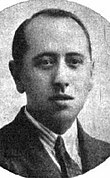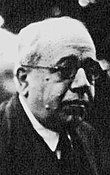Spanish general election, 1936
|
|
|||||||||||||||||||||||||||||||||
|---|---|---|---|---|---|---|---|---|---|---|---|---|---|---|---|---|---|---|---|---|---|---|---|---|---|---|---|---|---|---|---|---|---|
|
|||||||||||||||||||||||||||||||||
|
All 473 seats of the Congress of Deputies 237 seats needed for a majority |
|||||||||||||||||||||||||||||||||
| Turnout | 72.95% | ||||||||||||||||||||||||||||||||
|
|||||||||||||||||||||||||||||||||

Areas of most support: CEDA (blue), Popular Front (red), Centre (green)
|
|||||||||||||||||||||||||||||||||
|
|||||||||||||||||||||||||||||||||
Manuel Portela Valladares (caretaker)
Independent
Legislative elections were held in Spain on 16 February 1936. At stake were all 473 seats in the unicameral Cortes Generales. The winners of the 1936 elections were the Popular Front, a left-wing coalition of the Spanish Socialist Workers' Party (PSOE), Republican Left (Spain) (IR), Esquerra Republicana de Catalunya (ERC), Republican Union (UR), Communist Party (PCE), Acció Catalana (AC) and other parties. They commanded a narrow lead in terms of the popular vote, but a significant lead over the main opposition party, Spanish Confederation of the Autonomous Right (CEDA), of the political right in terms of seats. The election had been prompted by a collapse of a government led by Alejandro Lerroux, and his Radical Republican Party. Manuel Azaña would replace Manuel Portela Valladares, caretaker, as prime minister, after what were widely considered fair elections – although limited cases of electoral fraud did occur. They were the last of three elections held during the Spanish Second Republic, coming three years after the 1933 general election which had brought the first of Lerroux's governments to power. The poor result for the political right would help bring about the July coup, and the ensuing civil war. The right-wing military coup initiated by Gens. Sanjurjo and Franco ultimately brought about the end of parliamentary democracy in Spain until the 1977 general election.
...
Wikipedia



